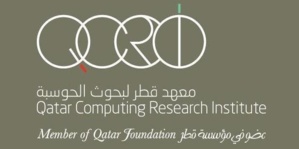Innovative platform developed by QCRI and Al Jazeera which can predict visits to news articles by taking cues from social media.

File source: www.qatarchronicle.com
News organizations have vast archives of information, as well as a number of web analytic tools that aid in allocating editorial resources to cover different news events, and capitalize on this information. These tools allow editors and media managers to react to shifts in their audience’s interest, but what is lacking is a tool to help predict such shifts.
Qatar Computing Research Institute (QCRI) and Al Jazeera are announcing the launch of FAST (Forecast and Analytics of Social Media and Traffic), a platform that analyzes in real-time the life cycle of news stories on the web and social media, and provides predictive analytics that gauge audience interest.
Qatar Computing Research Institute (QCRI) and Al Jazeera are announcing the launch of FAST (Forecast and Analytics of Social Media and Traffic), a platform that analyzes in real-time the life cycle of news stories on the web and social media, and provides predictive analytics that gauge audience interest.

File source: Qatar Foundation | QCRI
Predicting user behavior around news articles is valuable for a news organization as it allows them to deliver more relevant and engaging content, as well as improve the allocation of resources to developing stories.
The study of consumption patterns of online news has attracted considerable attention from the research community for more than a decade, primarily making predictions on patterns as single time series to determine website traffic, number of visits, number of comments, and personalised news recommendations among others. Predicting user behaviour around news articles is valuable for a news organisation as it allows them to deliver more relevant and engaging content, as well as improve the allocation of resources to developing stories.
FAST introduces a unique approach to prediction by integrating different user interactions to a news article, including website visits, social media reactions, and search and referrals in order to forecast the number of page views an article will receive during its effective lifetime, which is approximately three days for most articles. This hybrid observation method is based on qualitative and quantitative analysis that determines typical patterns in the life cycle of news.
The study of consumption patterns of online news has attracted considerable attention from the research community for more than a decade, primarily making predictions on patterns as single time series to determine website traffic, number of visits, number of comments, and personalised news recommendations among others. Predicting user behaviour around news articles is valuable for a news organisation as it allows them to deliver more relevant and engaging content, as well as improve the allocation of resources to developing stories.
FAST introduces a unique approach to prediction by integrating different user interactions to a news article, including website visits, social media reactions, and search and referrals in order to forecast the number of page views an article will receive during its effective lifetime, which is approximately three days for most articles. This hybrid observation method is based on qualitative and quantitative analysis that determines typical patterns in the life cycle of news.
The platform accurately models the overall traffic an article will receive by observing the first 30 to 60 minutes of social media reactions. Achieving the same prediction accuracy by using data from visits alone would require at least three hours of data. FAST continuously learns to produce more accurate predictions as data from the most recent related articles streams into the system.
“One of the main conclusions from our research is that social media reactions cannot be ignored when producing traffic predictions,” said Dr. Carlos Castillo, Senior Scientist in QCRI’s Social Computing team. “You need to take into account not only the number of Facebook shares and tweets each article receives, but also the richness of the discussion around an article in Twitter. This leads to much more accurate predictions than simply extrapolating from current page views.”
“One of the main conclusions from our research is that social media reactions cannot be ignored when producing traffic predictions,” said Dr. Carlos Castillo, Senior Scientist in QCRI’s Social Computing team. “You need to take into account not only the number of Facebook shares and tweets each article receives, but also the richness of the discussion around an article in Twitter. This leads to much more accurate predictions than simply extrapolating from current page views.”

File source: Qatar Foundation | corporate image
Qatar Foundation corporate website.
QCRI is a national research institute and a member of Qatar Foundation Research and Development, supporting Qatar’s mission to build the nation’s innovation and technology capacity. Al Jazeera is an award-winning international news network headquartered in Doha, Qatar.
For further information:
Kimberly Mathern
QCRI Communications Manager
email: kmathern@qf.org.qa
Al Jazeera Media Network
email: pressoffice@aljazeera.net
QCRI is a national research institute and a member of Qatar Foundation Research and Development, supporting Qatar’s mission to build the nation’s innovation and technology capacity. Al Jazeera is an award-winning international news network headquartered in Doha, Qatar.
For further information:
Kimberly Mathern
QCRI Communications Manager
email: kmathern@qf.org.qa
Al Jazeera Media Network
email: pressoffice@aljazeera.net
Tags :
Al Jazeera
FAST (Forecast and Analytics of Social Media and Traffic)
innovation and technology
Qatar Computing Research Institute (QCRI)
QATAR FOUNDATION
social media research
Posted by Christopher Oscar de Andrés, on Saturday, August 10th 2013 at 19:55
|
Comments (0)
Category
Recent posts
Archives
#Team Management #Gestión de Equipo International Business Development #Gestión de Equipo Comercial
5 MISSION AREAS IN HORIZON EUROPE
Acceso universal al tratamiento del sida
ACNUR
actor Pepe Sancho
ADHESIÓN DE CROACIA A LA UE
advertising / teleshopping spots
Africa
Alianza Atlántica
Alianza del Pacífico
Alibaba
Alibaba Group Holding Ltd.
AlipayApp
Amnistía Internacional
Ana Pastor
AnálisisyGestiónInteligenteDeDatos
Angela Merkel
Banco Central Europeo (BCE)
Banco Mundial
Barack Obama
batalla del sector del taxi y VTC
Benjamin Franklin
Bill Gates
binomio chavismo / antichavismo
Blockchain opportunities in international public health care sector
Blockchain technologies in health care
Blog Posts
Boris Johnson
Brexit
BUILDING THE CITIES OF THE FUTURE
China
Comisión Europea
Coronavirus
Covid-19
COVID-19
Cybercrime
David Cameron
Editorial Universitas SA
EU Convention of Human Rights
European Commission
FMI
Henrique Capriles
Human Rights
ICAA
International Business Development
Jack Ma
Jean-Claude Juncker
Mariano Rajoy
Obama
ONU
OSCE
The Council of Europe
Thomas Hammarberg
UNED
UNHCR
Unión Europea
Vladímir Putin






